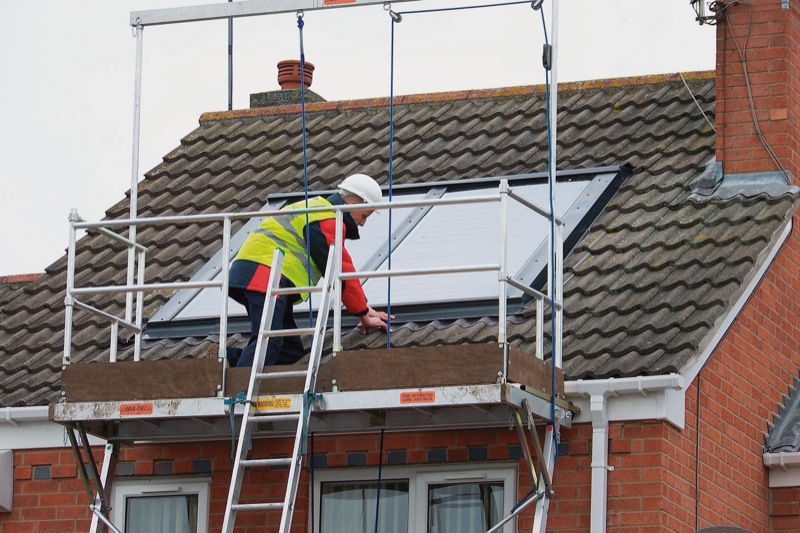Working platform
The term 'working platform' is defined by the Work at Height Regulations 2005 as: '...any platform used as a place of work or as a means of access to or egress from a place of work', including: '...any scaffold, suspended scaffold, cradle, mobile platform, trestle, gangway, gantry and stairway which is so used.'
Before the 2005 Regulations, working platforms were defined as fully-boarded platforms with handrails and toe boards.
For a platform to be suitable for working at height, it must be:
- Of sufficient size to allow safe passage and use of equipment and materials.
- Free from trip hazards or gaps.
- Clean and tidy.
- Fitted with handrails and toe boards if necessary.
- Not overloaded (this is particularly relevant to trestles that are loaded with blockwork).
- Erected on firm level ground to ensure equipment remains stable.
Before working platforms are used they must be inspected carefully to ensure they are fit for purpose and have been properly assembled or installed. If a platform is exposed to conditions that are liable to result in danger or damage, then it must continue to be inspected at regular intervals.
[edit] Related articles on Designing Buildings Wiki
- Construction plant.
- How to remove scaffolding.
- How to use a ladder.
- Lift table.
- Lifting device.
- Lifting platform.
- Mobile elevating work platforms (MEWPs).
- Piling mat.
- Post lift.
- Scaffolding.
- Scissor lift.
- Types of crane.
- Types of scaffolding.
- Work at height.
- Working at height - our duty to prevent harm and protect each other.
- Work at height checklist for managers.
- Work at height regulations.
- Working platforms for tracked plant: good practice guide to the design, installation, maintenance and repair of ground-supported working platforms.
Featured articles and news
Government consultations for the summer of 2025
A year of Labour, past and present consultations on the environment, the built environment, training and tax.
CMA competitiveness probe of major housing developers
100 million affordable housing contributions committed with further consultation published.
Homes England supports Greencore Homes
42 new build affordable sustainable homes in Oxfordshire.
Zero carbon social housing: unlocking brownfield potential
Seven ZEDpod strategies for brownfield housing success.
CIOB report; a blueprint for SDGs and the built environment
Pairing the Sustainable Development Goals with projects.
Types, tests, standards and fires relating to external cladding
Brief descriptions with an extensive list of fires for review.
Latest Build UK Building Safety Regime explainer published
Key elements in one short, now updated document.
UKGBC launch the UK Climate Resilience Roadmap
First guidance of its kind on direct climate impacts for the built environment and how it can adapt.
CLC Health, Safety and Wellbeing Strategy 2025
Launched by the Minister for Industry to look at fatalities on site, improving mental health and other issues.
One of the most impressive Victorian architects. Book review.
Common Assessment Standard now with building safety
New CAS update now includes mandatory building safety questions.
RTPI leader to become new CIOB Chief Executive Officer
Dr Victoria Hills MRTPI, FICE to take over after Caroline Gumble’s departure.
Social and affordable housing, a long term plan for delivery
The “Delivering a Decade of Renewal for Social and Affordable Housing” strategy sets out future path.
A change to adoptive architecture
Effects of global weather warming on architectural detailing, material choice and human interaction.
The proposed publicly owned and backed subsidiary of Homes England, to facilitate new homes.
How big is the problem and what can we do to mitigate the effects?
Overheating guidance and tools for building designers
A number of cool guides to help with the heat.
The UK's Modern Industrial Strategy: A 10 year plan
Previous consultation criticism, current key elements and general support with some persisting reservations.
Building Safety Regulator reforms
New roles, new staff and a new fast track service pave the way for a single construction regulator.

























